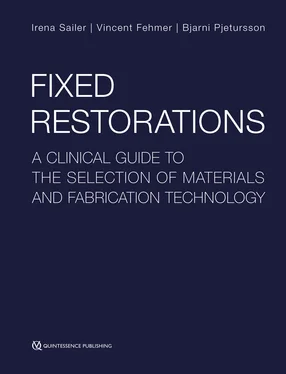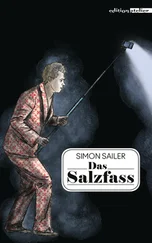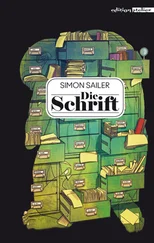Patients asking for an esthetic improvement of their dental appearance may approach the restorative team with a desired outcome in mind. Yet, the desired appearance can be difficult to achieve due to anatomical or other limitations. It is a challenge for the restorative team (ie, the dentist and dental technician) to determine the desired, yet realistic outcome for the patient before the initiation of restorative treatment.
Diagnostic wax-ups on the study casts and their transfer into the patient’s mouth using silicone indexes and autopolymerizing provisional resin (mock-up out of, eg, Protemp) are useful tools to clinically communicate and test the planned treatment outcome before the treatment.
The simulation of the final outcome helps with identifying the need for preprosthetic interventions, such as orthodontic tooth movement, or surgical procedures like crown lengthening and hard and/or soft tissue grafting. Furthermore, the diagnostic mock-up can serve as a guide for minimally invasive, defect-oriented tooth preparations.
Until recently, the pretreatment diagnostics encompassed the manual fabrication of a wax-up of the desired outcome on the study casts, and its transfer into clinics by means of a manually made resin mock-up. The major disadvantage of the conventional manually made wax-ups/mock-ups is that their fabrication is time-consuming, and in general only one version of the possible treatment outcome can be tested.
Contemporary digital technologies may provide advantageous features to the increase of efficiency of the pretreatment diagnostics. This Chapter reviews the esthetic parameters to be considered in the diagnostics, and the opportunities digital technologies offer in the diagnostic phase illustrating the procedures by means of one representative clinical example.
1.4.2 Esthetic parameters to be evaluated: step-by-step checklist
At the first examination of the patient, several aspects have to be considered as Part of the pretreatment diagnostics. The evaluation starts from the assessment of the general appearance of the patient, increasingly focusing on the details which are crucial for the restorative treatment. The following all-important aspects to be evaluated are listed next, in chronological order.
Facial aspect to be evaluated
■ Shape of the face – square, ovoid, tapered
■ Profile of the patient – flat, convex, concave
■ Midline
■ Interpupillary line
Smile aspect to be evaluated
■ Lip line – gummy smile, high, average, or low lip line
■ Vertical position of the incisal edges in relation to the face and the lip line
■ Horizontal position of the incisal edges in relation to the interpupillary line
■ Position of the dental midline in relation to the facial midline – potential midline shift
■ Angulations of the dental midline in relation to the facial midline and the interpupillary line
■ Outline of the incisal edges – straight, positive curve, negative curve
■ Exposure of posterior teeth
■ Buccal corridor
Tooth-related aspect to be evaluated
■ General shape of the clinical crown – square, ovoid, tapered
■ Size of the clinical crown – height, width, and the relation between height and width
■ Intratooth relation – size of the lateral incisor in relation to the central incisor and size of the canine in relation to the central and lateral incisors
■ Incisal edges steps
■ Tooth color – hue, value, chroma
■ Surface texture – smooth, pronounced
■ Characterization of the crown – translucency, spots, microcracks
Soft-tissue-related aspects to be evaluated
■ Position and curvature of the facial soft tissue
■ Soft tissue color and texture
■ Papillae – intact, reduced papilla height, missing, hyperplastic
After having evaluated these aspects clinically and on standardized extraoral and intraoral photographs (see Photo Documentation Protocol, Appendix 1), the pretreatment diagnostics are performed.
1.4.3 Time points for diagnostics, diagnostic tools
Three time points exist for the assessment of the diagnostic goal.
The first and ideal time point is before any invasive treatment is performed. A medical and dental anamnesis including a detailed esthetic anamnesis is performed to understand the patient’s needs 5, followed by a comprehensive extra- and intraoral examination. The restorative team gathers all the information to evaluate the clinical situation, and elaborates the need for treatment. Considering the complex and subjective nature of esthetics, an objective means for the evaluation of the tentative outcome is helpful for the decision-making process 1 , 3. The diagnostic wax-up serves as an objective tool for the evaluation of potential treatment outcomes 3 , 6 , 7. It improves the communication between patient, technician, and clinician, illustrating three-dimensionally the tentative treatment outcome 1 , 3 , 8. Commonly, the dental technician models a possible dental configuration in wax using clinical pictures and anatomical landmarks on the diagnostic cast (existing occlusal plane and length and position of the remaining teeth) as references. This process requires an undeniable amount of time and energy since the technician must integrate all the esthetic guidelines and adapt them to each individual case. The wax-up is later tried-in in the patient’s mouth to evaluate its integration into the patient’s smile and face, on what is called a diagnostic try-in . A silicone matrix made from the diagnostic wax-up serves as a negative cast for the fabrication of the diagnostic mock-up, which will be filled with autopolymerizing resin and placed over the unaltered natural teeth until polymerization. This mock-up allows the patient and restorative team to envisage and evaluate the possible restorative outcome 1. This procedure, however, is only feasible in certain clinical situations and it will only be effective in situations where additive restorations are foreseen as the mock-up lies over the unprepared teeth. In cases where subtractive procedures are necessary the intraoral transfer of the wax-up will need to be performed at a later treatment stage after the preparation.
The second time point to evaluate the esthetic and functional outcome of the prospective restoration is the provisional phase. Indirect provisional restorations made in the laboratory according to the diagnostics serve as transfer of the desired treatment outcome into the clinical situation and are useful tools to evaluate the diagnostic goal (see also Part I, Chapter 8).
In the present treatment concept, conventional or digital eggshell provisional restorations are the first option. For the conventional eggshell provisionals, the technician duplicates the shapes modeled in wax into a tooth-colored resin, which then is hollowed on the internal side until only a thin outer resin layer remains. Alternatively, the eggshell provisional can be milled out of a resin ingot by means of a computer-assisted design and computer-assisted manufacturing (CAD/CAM) procedure following a virtual wax-up. These eggshell provisional restorations allow the clinician to deliver a high-end laboratory provisional during the first invasive appointment. The tentative final restoration contour is relined intraorally with autopolymerizing resin on the prepared abutments. This method saves time and costs derived from a traditional indirect provisional fabrication (impression on prepared abutments, bite registration, chair-side direct provisional production, and a second appointment to deliver the laboratory provisional), while allowing for a perfect fit of the provisional crown margins. Patients suffering from insufficient restorations or unsatisfactory dental appearances gain significantly from this direct approach, since the esthetic improvement can be perceived immediately after the initial preparation and the insertion of the provisional.
Читать дальше












